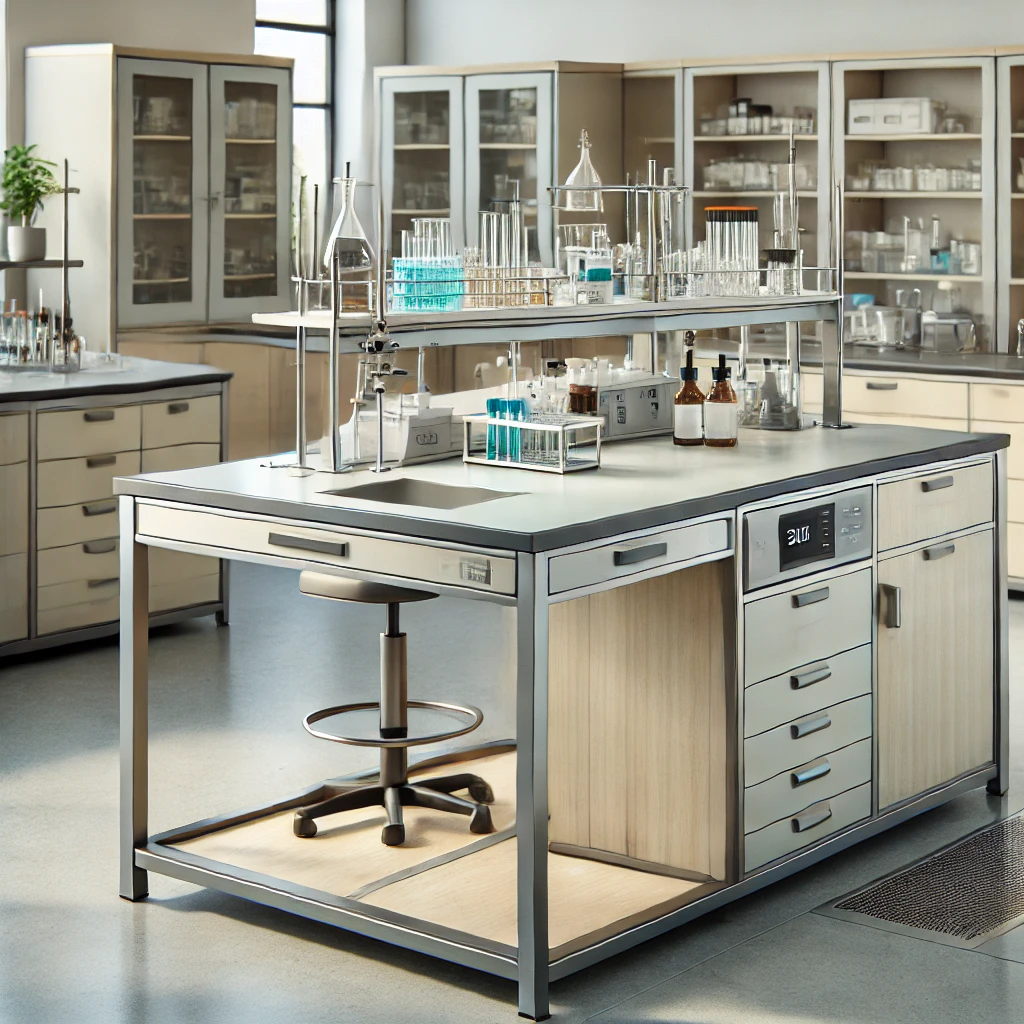Table of Contents
As an expert in laboratory furniture, I’m excited to dive into the world of laboratory benches – the unsung heroes of scientific research and experimentation. Whether you’re setting up a new lab or upgrading an existing one, choosing the right bench is crucial for efficiency, safety, and productivity. Let’s explore the various types of laboratory benches available and help you make an informed decision for your specific needs.
Standard Laboratory Benches
Standard laboratory benches are the workhorses of any lab. These versatile benches typically feature a sturdy frame, often made of steel, with a durable work surface. The surface material can vary, but common options include:
Epoxy resin: Highly resistant to chemicals, heat, and moisture
Phenolic resin: Durable and resistant to many chemicals
Stainless steel: Easy to clean and sterilize, ideal for medical labs
High-pressure laminate: Cost-effective and suitable for light-duty applications
Standard benches often come with storage options like drawers or shelves underneath, maximizing space efficiency. They’re suitable for a wide range of applications, from chemistry to biology labs.
Mobile Laboratory Benches
For labs that require flexibility, mobile benches are an excellent choice. These benches are equipped with heavy-duty casters, allowing easy movement around the lab. Key features include:
Locking wheels for stability when stationary.
Adjustable height options for ergonomic comfort.
Compact designs for easy maneuvering in tight spaces.
Mobile benches are perfect for collaborative environments or labs that frequently reconfigure their space. They’re also great for shared equipment that needs to be moved between workstations.
Balance Tables
Precision is paramount in scientific work, and balance tables are designed specifically for this purpose. These benches are engineered to minimize vibrations, ensuring accurate measurements. Features include:
Heavy-duty construction with vibration-dampening materials.
Non-conductive surfaces to prevent static interference.
Leveling feet for perfect horizontal alignment.
Balance tables are essential for labs conducting sensitive weighing operations or using precision instruments like microscopes or spectrophotometers.
Fume Hoods
While not technically a bench, fume hoods are a critical component in many labs. They provide a safe, enclosed workspace for handling hazardous materials. Modern fume hoods often incorporate bench-like features, including:
Built-in work surfaces resistant to chemicals.
Storage cabinets underneath for safety equipment or chemicals.
Adjustable sash windows for controlled airflow.
Fume hoods are indispensable in chemistry labs, pharmaceutical research, and any environment where volatile or toxic substances are handled.
Height-Adjustable Benches
Ergonomics plays a crucial role in lab productivity and worker comfort. Height-adjustable benches allow researchers to customize their workspace. Benefits include:
Reduced strain on back, neck, and shoulders.
Accommodation for both seated and standing work.
Suitability for users of different heights.
These benches are particularly useful in labs with multiple users or for tasks that require alternating between sitting and standing positions.
Cleanroom Benches
For labs requiring stringent contamination control, cleanroom benches are the go-to option. These specialized benches are designed to maintain a particle-free environment. Features include:
Non-porous, easy-to-clean surfaces.
Rounded edges to prevent particle accumulation.
Compatible with HEPA filtration systems.
Cleanroom benches are essential in semiconductor manufacturing, pharmaceutical production, and other industries requiring ultra-clean environments.
Computer Workstations
Modern labs often require a seamless integration of traditional wet lab work with computer-based data analysis. Computer workstations designed for lab use offer:.
Ergonomic design for comfortable computer use.
Cable management systems to keep wires organized and protected.
Surfaces resistant to common lab spills.
These workstations bridge the gap between bench work and data processing, essential for today’s research environments.
Specialty Application Benches
Some labs require benches tailored to specific applications. Examples include:
PCR workstations: Designed to prevent contamination in molecular biology work.
Microscope benches: Featuring vibration isolation and ergonomic design for long periods of microscope use.
Instrument benches: Custom-designed to house specific large instruments like chromatography systems.
ESD anti-static workbench: a specialized workbench designed to prevent electrostatic discharge.
These specialized benches ensure optimal conditions for specific scientific procedures and equipment.
Choosing the Right Laboratory Bench
When selecting a laboratory bench, consider the following factors:
- Nature of work: What types of experiments or procedures will be conducted?
- Space constraints: How much room do you have, and is flexibility important?
- Chemical resistance: What substances will the bench be exposed to?
- Load capacity: How much weight does the bench need to support?
- Ergonomics: Will multiple users of different heights use the bench?
- Budget: What’s the balance between cost and features?
- Regulatory compliance: Does the bench meet safety standards for your specific industry?
By carefully evaluating these factors, you can choose the perfect laboratory bench that will serve your needs for years to come.
Maintenance and Care
To ensure the longevity and performance of your laboratory benches:
- Clean surfaces regularly with appropriate cleaners
- Inspect for damage and repair promptly
- Maintain proper weight distribution to prevent warping
- Follow manufacturer guidelines for care and maintenance
Properly maintained benches not only last longer but also contribute to a safer, more efficient lab environment.
Conclusion
The right laboratory bench is more than just a piece of furniture – it’s the foundation of scientific discovery. From standard benches to specialized workstations, each type serves a unique purpose in the diverse world of scientific research. By understanding the various options available and considering your specific needs, you can create a lab space that enhances productivity, ensures safety, and facilitates groundbreaking work.
Remember, investing in quality laboratory benches is investing in the future of your research. Choose wisely, and may your lab be the birthplace of the next great scientific breakthrough!




